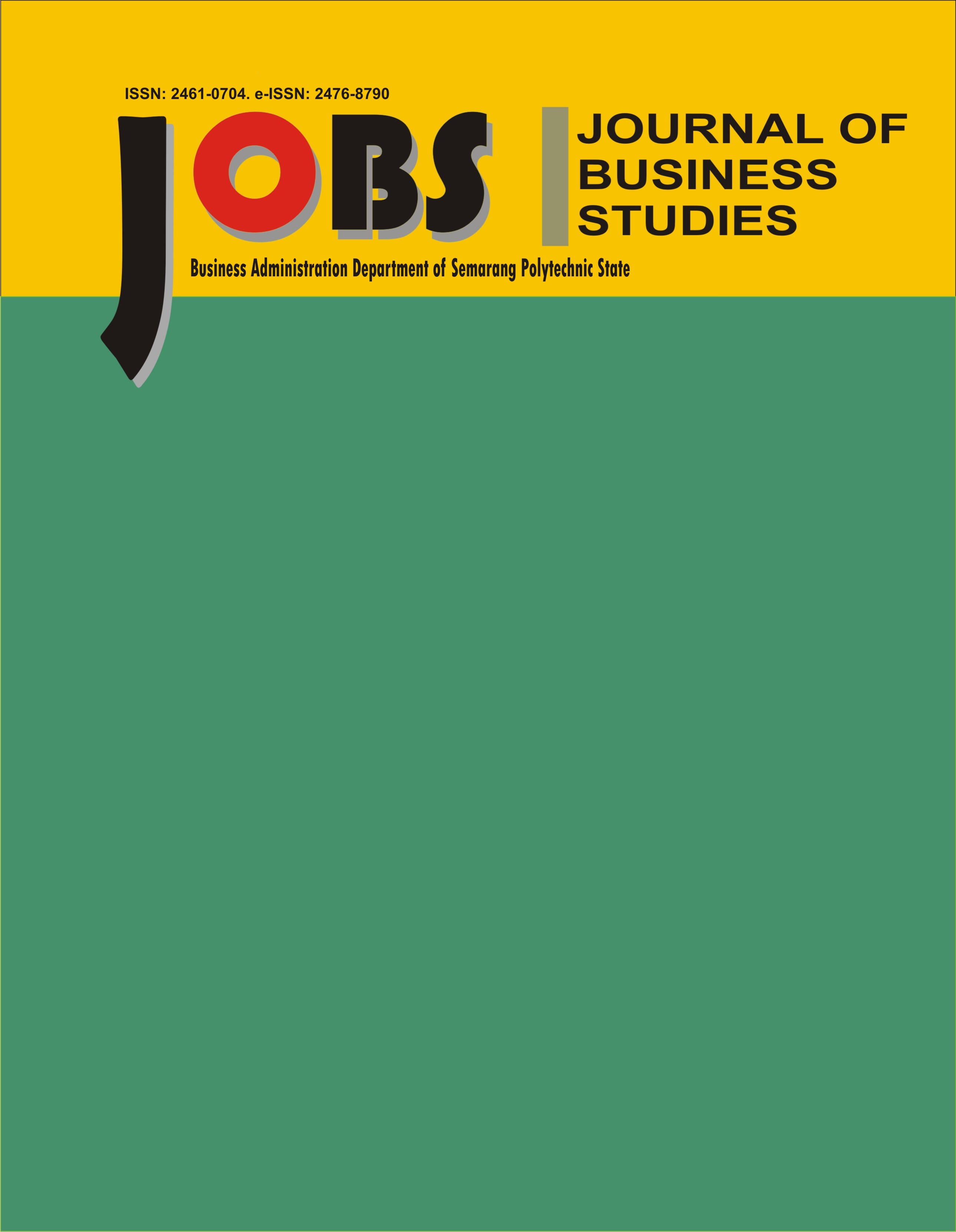PERCEPTUAL MAPPING POTENSI EKONOMI MAKANAN TRADISIONAL SEBAGAI PANGAN FUNGSIONAL BERBASIS PANGAN LOKAL KOTA SURAKARTA
DOI:
https://doi.org/10.32497/jobs.v5i1.1671Keywords:
traditional food, functional food, favorite food and economic potential.Abstract
This research is based on previous research”™s result that there was a image changing of Surakarta City from Batik”™s City toward City of traditional Food. There are four objectives of this research, those are; (1) identify Surakarta traditional food”™s as functional foods; (2) Mapping the growth of Surakarta”™s traditional foods at least five periode; (3) mapping the potential of Surakarta”™s traditional foods as a culture heritage”™s foods, functional food dan popular foods. (4) mapping the economic potential of Surakarta”™s tradisional foods.
The objective of this research will be achieved toward analysis primary and secondary datas. Primary datas are obtained by survey method with 200 respondents and analyzed by using BiPlot, Pearson Correlation and Descriptive method. Sencondary datas are obtained from BPS, and Disperindag, and analyzed by using linier regression dan Pearson Correlation.
This researh results that the eight of Surakarta”™s traditional foods are culture inheritage”™s foods, functional foods, favorite foods and have economic potential to rise t Surakarta”™s economy growth. Therefore if the Surakarta”™s region government should employ three stages to develope these traditional foods as their food city branding. There are clustering analysis, SAP analysis and developing trust (social capital) toward their food city branding.
Downloads
Published
Issue
Section
License
Authors who publish with this journal agree to the following terms:
Authors retain copyright and grant the journal right of first publication with the work simultaneously licensed under a Creative Commons Attribution License that allows others to share the work with an acknowledgement of the work's authorship and initial publication in this journal.
Authors are able to enter into separate, additional contractual arrangements for the non-exclusive distribution of the journal's published version of the work (e.g., post it to an institutional repository or publish it in a book), with an acknowledgement of its initial publication in this journal.
Authors are permitted and encouraged to post their work online (e.g., in institutional repositories or on their website) prior to and during the submission process, as it can lead to productive exchanges, as well as earlier and greater citation of published work (See The Effect of Open Access).






